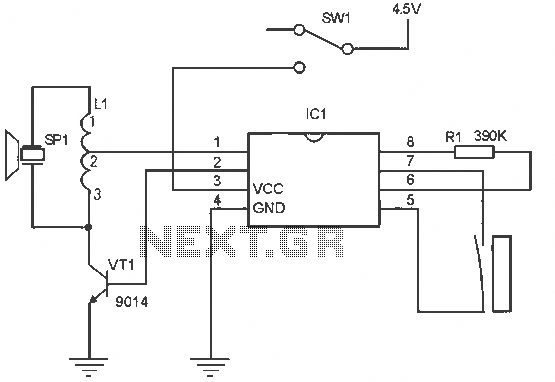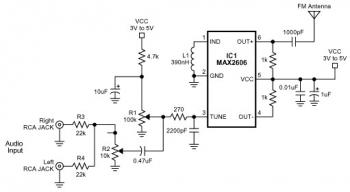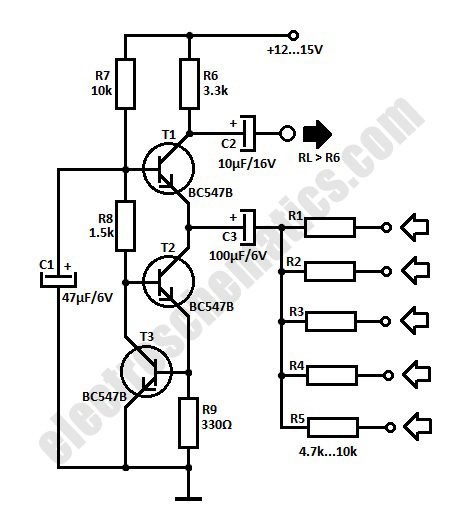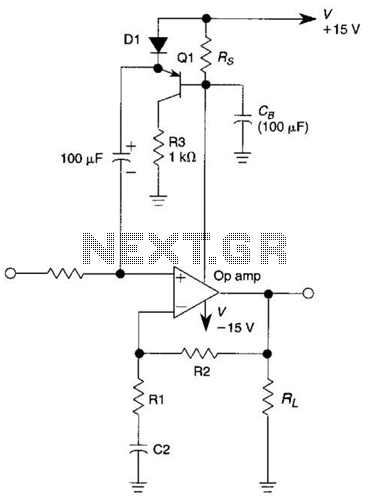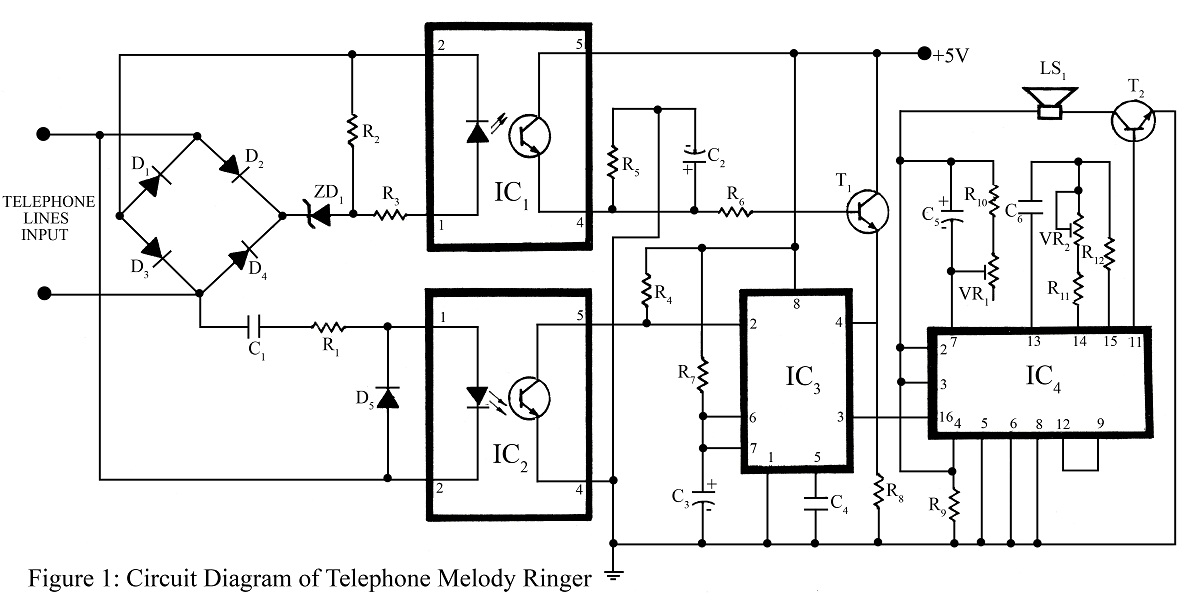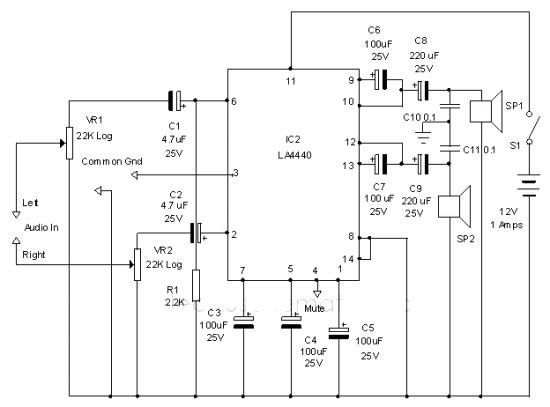
10 Minute timer circuit

When an alarm or notification is needed after ten minutes, the circuit illustrated below can be utilized. This circuit is essentially a monostable multivibrator based on the IC NE555. When the reset push button is pressed, the green LED (D1) illuminates after 10 minutes. If the values are modified to R1 = 9.5 kΩ, R4 = 2.15 MΩ, C1 = 3.3 µF, and C2 = 100 µF while keeping other values constant, the time until diode D1 lights up will change. Assistance is requested regarding how to adjust the circuit to change the timing from 10 minutes to 1 minute, including the necessary resistor and capacitor values. The switch S1 functions as a push-to-on and release-to-off switch (bell push). With the initial negative pulse, IC pin 3 will go low, causing the red LED (D2) to illuminate after ten minutes, while green LED (D1) will turn on and red LED (D2) will turn off. There are concerns about the schematic not functioning correctly due to a direct connection from positive to ground with resistors and LEDs, causing the LEDs to light without IC involvement. Testing has shown that using a 100-second delay with a 10 MΩ resistor and a 10 µF capacitor, or a 1 MΩ resistor with a 100 µF capacitor, is feasible. However, the maximum delay achievable is around 7 to 8 minutes with a 470 µF capacitor and a 1 MΩ resistor. The maximum capacitance recommended is 470 µF and resistance of 2.2 MΩ, as higher values may not allow the capacitor to charge adequately. An electronic music generator can be used instead of an LED for sound output, operating between 3 to 15 volts. The NE555 chip is essential for the circuit to function correctly; if it is not used, a transistor may be required to handle the current for buzzers, which can operate at various voltages.
To design a timer circuit utilizing the NE555 IC, the monostable configuration can be implemented to achieve the desired time delay. The time delay (T) for the monostable multivibrator is calculated using the formula:
\[ T = 1.1 \times R \times C \]
Where:
- \( T \) is the time in seconds,
- \( R \) is the resistance in ohms,
- \( C \) is the capacitance in farads.
For a 1-minute delay, which is equivalent to 60 seconds, the values of R and C need to be selected accordingly. For example, if a capacitor of 100 µF is used, the resistance can be calculated as follows:
\[ R = \frac{T}{1.1 \times C} = \frac{60}{1.1 \times 100 \times 10^{-6}} \approx 545 kΩ \]
This suggests using a resistor value around 560 kΩ for practical purposes. Alternatively, if a smaller capacitor value is preferred, such as 10 µF, the resistance would need to be significantly higher:
\[ R = \frac{60}{1.1 \times 10 \times 10^{-6}} \approx 5454 kΩ \]
This indicates a resistor value of about 5.6 MΩ. It is essential to ensure that the resistor and capacitor chosen are compatible with the NE555 specifications and can handle the required voltage and current for the circuit to function effectively.
The circuit should also include a push button switch (S1) to initiate the timing sequence. Upon pressing the switch, the output pin of the NE555 will transition, activating the desired output (e.g., an LED or buzzer) after the specified delay. The output can be further modified by adding additional components such as transistors if higher current is needed for driving larger loads.
Overall, the design of the timer circuit using the NE555 IC can be tailored by selecting appropriate resistor and capacitor values to achieve the desired timing while ensuring reliable operation.When ever you need to get an alarm or intimation after ten minutes, the circuit shown below can be used. The circuit is nothing but a monostable multivibrator based on IC NE 555. When ever you press the reset push button the green LED D1 glows after 10 minutes. if i change the value like R1=9. 5k ohm, R4=2. 15M ohm, C1=3. 3 micro farad, C2=100 micro fa rad and other all values remain same then after what time diode D1 will glows and in output what will be come CAN ANY ONE HELP ME IF I WANT TO CHANGE THE 10 MINUTES TO 1 MIN WHICH COMPONENTS I HAVE TO CHANGE AND WHAT ARE VALUES FOR THE RESISTOR AND CAPACITOR FOR 1 MINUTE TIMER CIRCUIT IF U KNOW PLZZZZ MAIL TO raviteja50100@gmail. com frnds please help to me Hi Brian S1 is a push to on and release to off switch (bell push) With the first negative pulse IC pin 3 will go low, hence LED D2 Red should come on after ten minutes D1 green should come on and Red should go off.
Please check. Old post but, The schematic doesn`t work ”- There is a direct connection from positive to ground with resistors and LEDs connected. The LEDs light without any IC involvement. 100sec with 10M with 10uf or 1M with 100uF. Beyond this it cannot be predicted. but I have tried upto 470uF and 1M with a maximum of 7 to 8mts, not beyond this. I have used tantalum capacitor and metal film resistance. 100sec with 10M with 10uf or 1M with 100uF. Beyond this it cannot be predicted. but I have tried upto 470uF and 1M with a maximum of 7 to 8mts, not beyond this. I have used tantalum capacitor and metal film resistance. Dear Harley The maximum capacitance you can use is 470uF and resistance 2. 2M. with the internal leakage of 470uF, 2. 2M may not be in a position to charge the capacitor at all. hence 1M and 330uF are the practically the highest values you can use. The delay cannot be greater than 10 to 15 mts. even an hr delay is not possible. Dear Johnson you can replace the LED with an electronic music generators (similar to car reverse horn).
It is a two lead device with built in ceramic sounder and the required electronics to produce beeps or continuous tone etc. this device can operate from 3 to 15 volt with the out put sound level varying. Delete R3. Wishing you Happy construction and enjoyment. Yes it can provided you have used a NE555 chip. If you haven`t used a NE555 then if it doesn`t work its most likely the 555 can`t handle the current.
A transistor would then be required as well. Most buzzers come with a rated voltage and current. The voltage isn`t too serious as most buzzers will operate from 1. 5V 20V even if it says 5V(depending on manufacturer). If it`s a 5V buzzer it should work just as well off of 9V as off 5V. 🔗 External reference
To design a timer circuit utilizing the NE555 IC, the monostable configuration can be implemented to achieve the desired time delay. The time delay (T) for the monostable multivibrator is calculated using the formula:
\[ T = 1.1 \times R \times C \]
Where:
- \( T \) is the time in seconds,
- \( R \) is the resistance in ohms,
- \( C \) is the capacitance in farads.
For a 1-minute delay, which is equivalent to 60 seconds, the values of R and C need to be selected accordingly. For example, if a capacitor of 100 µF is used, the resistance can be calculated as follows:
\[ R = \frac{T}{1.1 \times C} = \frac{60}{1.1 \times 100 \times 10^{-6}} \approx 545 kΩ \]
This suggests using a resistor value around 560 kΩ for practical purposes. Alternatively, if a smaller capacitor value is preferred, such as 10 µF, the resistance would need to be significantly higher:
\[ R = \frac{60}{1.1 \times 10 \times 10^{-6}} \approx 5454 kΩ \]
This indicates a resistor value of about 5.6 MΩ. It is essential to ensure that the resistor and capacitor chosen are compatible with the NE555 specifications and can handle the required voltage and current for the circuit to function effectively.
The circuit should also include a push button switch (S1) to initiate the timing sequence. Upon pressing the switch, the output pin of the NE555 will transition, activating the desired output (e.g., an LED or buzzer) after the specified delay. The output can be further modified by adding additional components such as transistors if higher current is needed for driving larger loads.
Overall, the design of the timer circuit using the NE555 IC can be tailored by selecting appropriate resistor and capacitor values to achieve the desired timing while ensuring reliable operation.When ever you need to get an alarm or intimation after ten minutes, the circuit shown below can be used. The circuit is nothing but a monostable multivibrator based on IC NE 555. When ever you press the reset push button the green LED D1 glows after 10 minutes. if i change the value like R1=9. 5k ohm, R4=2. 15M ohm, C1=3. 3 micro farad, C2=100 micro fa rad and other all values remain same then after what time diode D1 will glows and in output what will be come CAN ANY ONE HELP ME IF I WANT TO CHANGE THE 10 MINUTES TO 1 MIN WHICH COMPONENTS I HAVE TO CHANGE AND WHAT ARE VALUES FOR THE RESISTOR AND CAPACITOR FOR 1 MINUTE TIMER CIRCUIT IF U KNOW PLZZZZ MAIL TO raviteja50100@gmail. com frnds please help to me Hi Brian S1 is a push to on and release to off switch (bell push) With the first negative pulse IC pin 3 will go low, hence LED D2 Red should come on after ten minutes D1 green should come on and Red should go off.
Please check. Old post but, The schematic doesn`t work ”- There is a direct connection from positive to ground with resistors and LEDs connected. The LEDs light without any IC involvement. 100sec with 10M with 10uf or 1M with 100uF. Beyond this it cannot be predicted. but I have tried upto 470uF and 1M with a maximum of 7 to 8mts, not beyond this. I have used tantalum capacitor and metal film resistance. 100sec with 10M with 10uf or 1M with 100uF. Beyond this it cannot be predicted. but I have tried upto 470uF and 1M with a maximum of 7 to 8mts, not beyond this. I have used tantalum capacitor and metal film resistance. Dear Harley The maximum capacitance you can use is 470uF and resistance 2. 2M. with the internal leakage of 470uF, 2. 2M may not be in a position to charge the capacitor at all. hence 1M and 330uF are the practically the highest values you can use. The delay cannot be greater than 10 to 15 mts. even an hr delay is not possible. Dear Johnson you can replace the LED with an electronic music generators (similar to car reverse horn).
It is a two lead device with built in ceramic sounder and the required electronics to produce beeps or continuous tone etc. this device can operate from 3 to 15 volt with the out put sound level varying. Delete R3. Wishing you Happy construction and enjoyment. Yes it can provided you have used a NE555 chip. If you haven`t used a NE555 then if it doesn`t work its most likely the 555 can`t handle the current.
A transistor would then be required as well. Most buzzers come with a rated voltage and current. The voltage isn`t too serious as most buzzers will operate from 1. 5V 20V even if it says 5V(depending on manufacturer). If it`s a 5V buzzer it should work just as well off of 9V as off 5V. 🔗 External reference
Warning: include(partials/cookie-banner.php): Failed to open stream: Permission denied in /var/www/html/nextgr/view-circuit.php on line 713
Warning: include(): Failed opening 'partials/cookie-banner.php' for inclusion (include_path='.:/usr/share/php') in /var/www/html/nextgr/view-circuit.php on line 713
